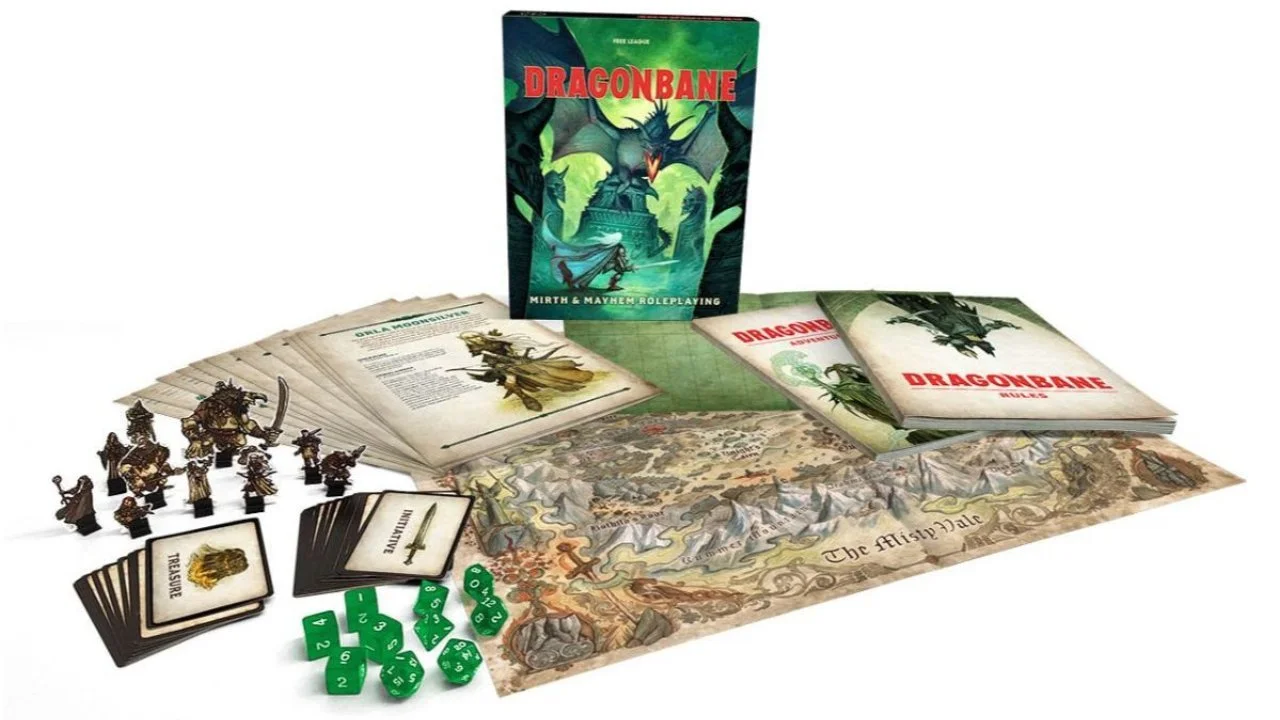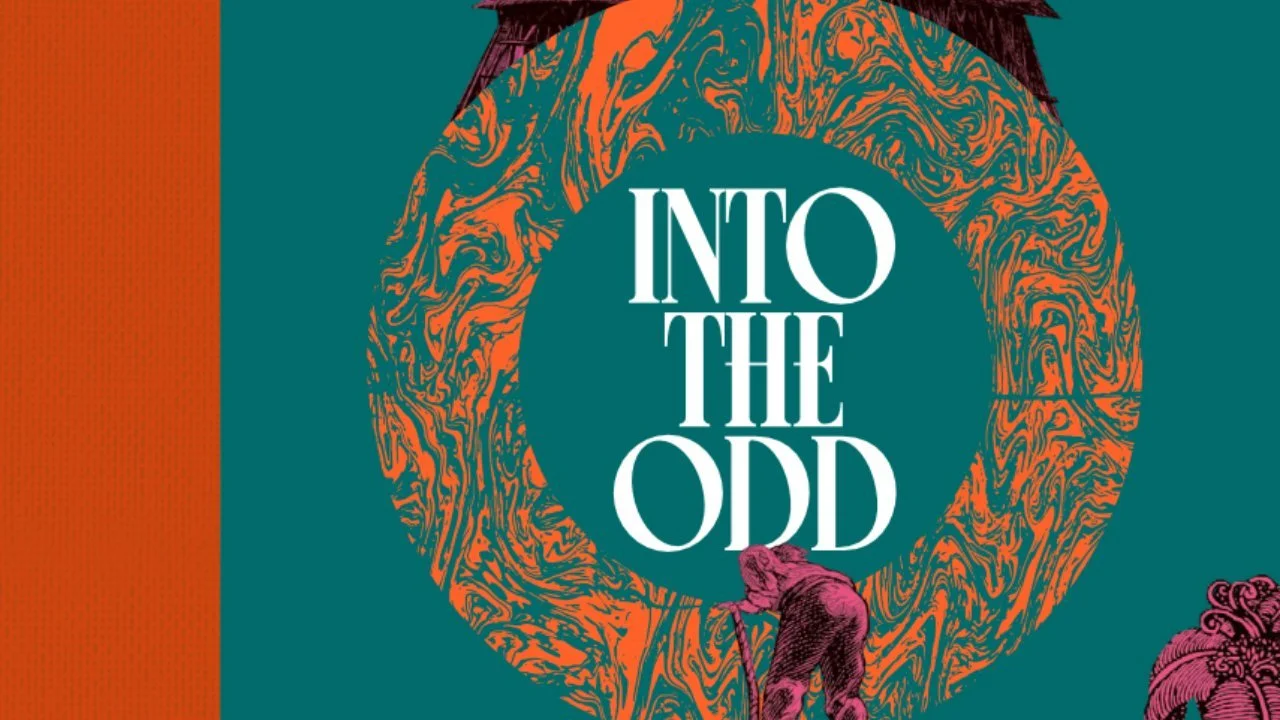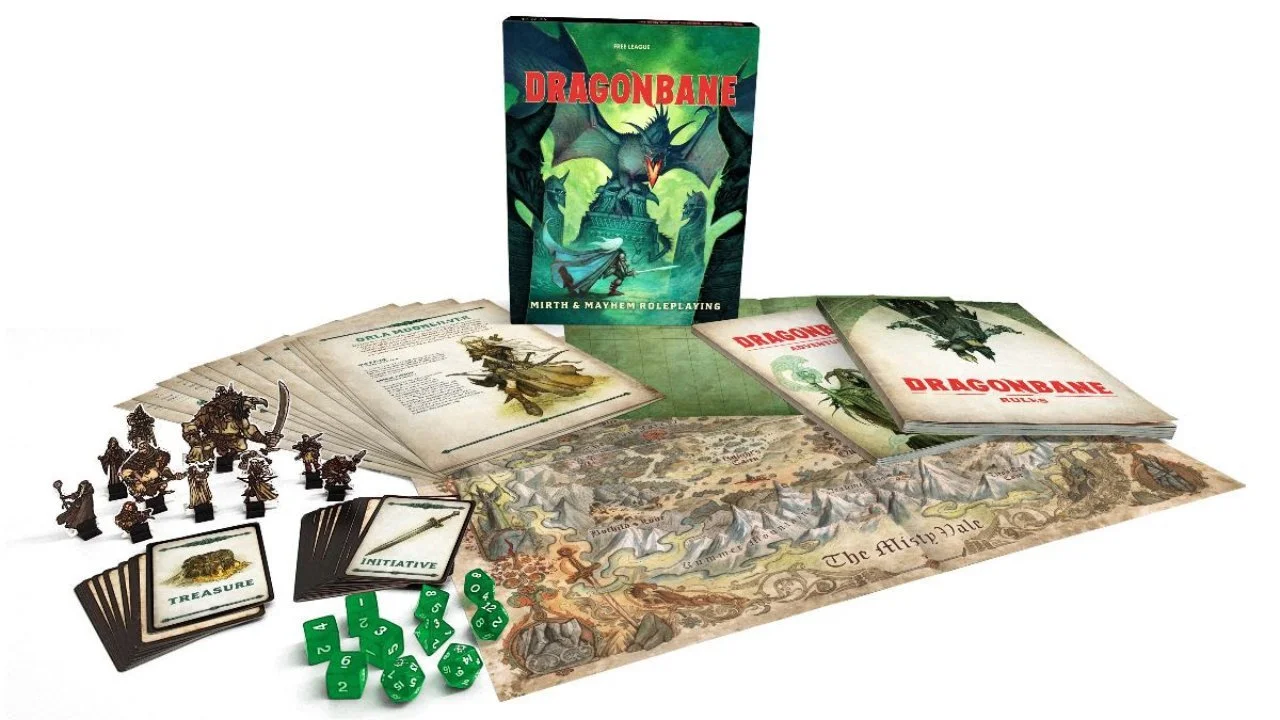Demo Build Provided by Free League Publishing
Recently, Free League Publishing announced that they successfully Kickstarted the return of the 1980s Swedish tabletop role-playing game Drakar och Demoner, or Dragons and Demons in English. This TTRPG return project is being done to not only bring role-playing back to its roots but to provide a classic experience in an updated and modernized way. Along with the improvements to the game, they have dubbed it a proper English name, Dragonbane.
Following the success of their crowdfunding, they released a demo-sized version of the TTRPG. This demo included the basic core rules, a handful of pre-made characters, and a one-shot-sized campaign. Running this one-shot with my usual table of players took us just under 3 hours, which is our normal session length, and they, unfortunately, got team party killed (tpk’d). On that note, I’ll just say - don’t split the party! As for how well the session ran and the game was able to be understood, let’s dive into the details.
Gameplay
Running this as the Game Master, this game seems to pretty much hold your hand. Creature encounters are only partial control where you can pick who the target is and their movement, but their actual attacks are done by the roll of a die. That said, they did have a pretty free-to-place system for setting up the actual one-shot. Using the suggestion system in the demo, I managed to place creatures around appropriately and still use the big bad creature of the crypt to do some scary appearances.
An interesting aspect of Dragonbane is that you actually want to roll low. At first, this felt weird, but it turns out to require less math to figure out the rolls. For instance, when you go to attack you check that weapon type’s skill score for your character and you just need to roll lower than that. The same goes for regular skill checks as the team goes to investigate and explore.
They are a bit harsher with the use of time in a more direct manner as well. The rest system is changed to be more so used mid-activities as well. For instance, a short rest is considered a stretch and the random event table for me to roll on is based on how often a stretch happens. Seeing how simply investigating a room takes the same amount of time as a stretch, every time the players make an action there is a chance I, as the GM, will roll an event for them to deal with.
Something that lingered from this game being played in person is the initiative system. They have it listed that you are supposed to draw cards to decide who goes first. Since my party is held online, we simply rolled for the initiative but kept the “low rolls are best” system.
To go into more detail on the dice rolling, a Natural 1 is considered a Dragon roll and a Natural 20 is considered a Demon roll. When players roll to do a skill or attack check, they can also Push the Dice when they fail. This lets them re-roll for that same skill or attack check but at the cost of an affliction. They can pick from six different afflictions, each affecting one of their ability types and when they do a skill or attack check for that ability in particular, they must make it at disadvantage. They can do this up to six times, taking a new affliction each time and they can only heal one per stretch or all of them from a long rest. However, if they roll a Demon, they can not Push the Dice.
For magic users and the abilities of each character, since their race seems to give them a couple of abilities, willpower management becomes important. It costs willpower to use any ability or cast any spell and if you run out, you can’t do anymore. Lucky for wizards, if they roll a Dragon while attacking, they can choose a number of special effects which include the spell costing no willpower. They can also make it do double damage or choose to get a second attack out on their turn to hit another enemy, but not the same one.
Expectations
As we played through the one-shot, we started to see more and more why they consider this just a demo. There are a lot of different things, mainly with the creatures they fight against, where we needed them to do a saving throw but the DC for that roll wasn’t listed. I found myself, as the GM, just picking a DC for different creatures based on what felt right given my experience running Dungeon and Dragons campaigns. They definitely need to fill that information in.
While they did fill out a basic form of the armor, weapons, and shop listings, those who aren’t using melee combat are a bit limited. The spell list is minimalistic with only a handful of actual attacks and another handful of tricks, or cantrips. This list needs to be fleshed out greatly to give a much larger variety to the spell casters. From the one-shot, you can tell that they are definitely a key member of any party, but with such a limited number of spells, they can be off-putting for players to take on.
Since a lot of parties play online now, they should also list a second official option for initiative setup. I would suggest the rolling system that most D20 TTRPGs use, but keeping to the “low roll is better” system, a Natural 1 would be the one who goes first and let the character with the highest Dexterity ability score go first on duplicate rolls.
Verdict
Dragonbane is a solid TTRPG that definitely deserves to be revived and brought back to today’s world of tabletop gamers! The sense of a classic system in play was very evident while we played through the demo’s one-shot and that is something I do hope they manage to maintain as they continue to build this back up, now in English. I look forward to them finishing this TTRPGs revival and working out all the kinks that are still poking through, which isn’t very surprising given this is a 40-year-old title.
Dragonbane is set to fully release later in 2023.


















